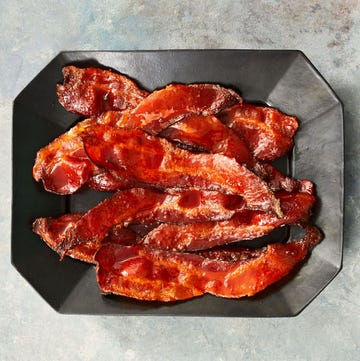Browsing the dairy aisle these days can be more overwhelming than a chain restaurant menu. Adding to the already dizzying array of choices is the relative newcomer to American markets: skyr (pronounced “skeer”), an Icelandic style of fermented dairy.
What’s the difference between skyr and Greek yogurt, you ask? The two are similar in that they are both strained and, as a result, thick and creamy. On the spectrum of thickness, conventional American-style yogurt has the thinnest consistency, then Greek yogurt, and skyr is the thickest — so much so that it’s technically classified as cheese in Iceland.
If all of this is confusing to you, read on for a quick primer on Greek yogurt vs. skyr and learn how the two are different.
What is Greek yogurt?
Greek yogurt is thicker and creamier than American-style yogurt because it’s strained, removing the whey (a liquid that contains lactose). Reducing the amount of lactose (a natural sugar) is what gives Greek yogurt its signature mouth-puckering tartness. You can find this style of yogurt in whole milk, low-fat and nonfat varieties, all in many flavors, including plain, vanilla and different fruits. It’s terrific on its own, topped with granola or fruit, or blended into smoothies and dips or even used to make pancakes.
What are the benefits of Greek yogurt?
Greek yogurt is a nutritional powerhouse, proving to be a great source of protein, calcium and other essential nutrients. Look for ones with live strains of probiotics, which will support a healthy gut.
What is skyr?
Like Greek yogurt, skyr is strained but milder in flavor and less tart. That’s because skyr is made from different cultures than those used for Greek yogurt, giving it a luxuriously smooth and creamy texture.
Although skyr has recently gained popularity in the U.S., this fermented dairy product dates back over one thousand years ago to the Vikings. It’s traditionally made with skim milk but brands available in America, such as Siggi’s, Icelandic Provisions and Norr Organic, also make versions using whole milk. It’s available in a variety of flavors, including Nordic-inspired ingredients, such as strawberry and lingonberry, elderflower and lemon and peach cloudberry.
What are the benefits of skyr?
Think of skyr as Greek yogurt’s overachieving cousin, packing in even more satiating protein per serving. The two are equally high in calcium, which promotes healthy bones and teeth. Here’s how the two nonfat plain versions stack up against each other:
| Per 5-oz serving | Skyr | Greek Yogurt |
| Calories | 90 | 80 |
| Protein (in grams) | 16 | 14 |
| Fat (in grams) | 0 | 0 |
| Sugar (in grams) | 4 | 5 |
| Calcium (daily percentage) | 10 | 10 |
The bottom line
Though skyr and Greek yogurt stack up similarly nutrition-wise and look almost identical, they are not the same thing. Skyr is thicker and less tangy compared to Greek yogurt, and it's made using different cultures than those used for Greek yogurt. In Iceland, skyr is technically considered a cheese.
Wondering if you can substitute skyr with Greek yogurt in a recipe and vice versa? As long as you match the fat percentage (don't swap whole-milk yogurt for nonfat skyr, for example) and flavor, then yes, you can use these two ingredients interchangeably.
Stefani (she/her) is a registered dietitian, a NASM-certified personal trainer and the director of the Good Housekeeping Institute Nutrition and Fitness Lab, where she oversees all nutrition and fitness-related content, testing and evaluation. She holds a master’s degree in clinical nutrition from New York University, as well as advanced certifications as a Women's Fitness Specialist and a Behavior Change Specialist. Stefani is dedicated to providing readers with evidence-based content to encourage informed food choices and healthy living. She is an avid CrossFitter and a passionate home cook who loves spending time with her big fit Greek family.













